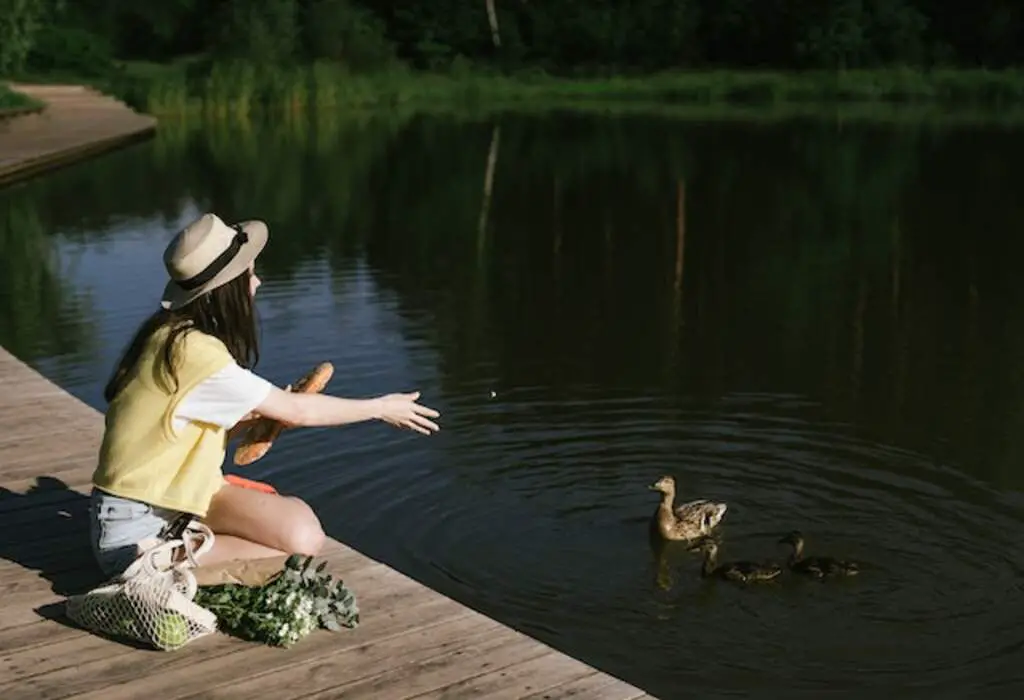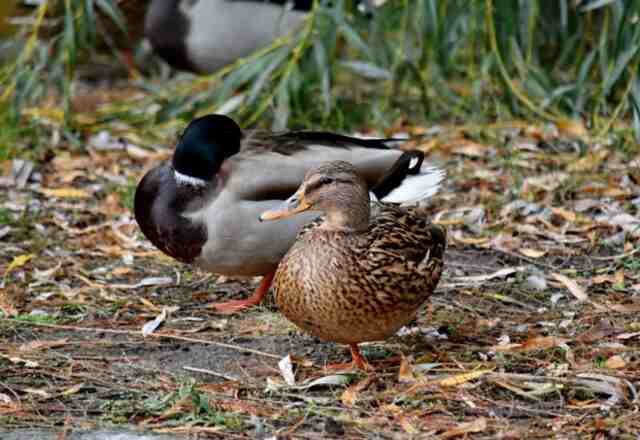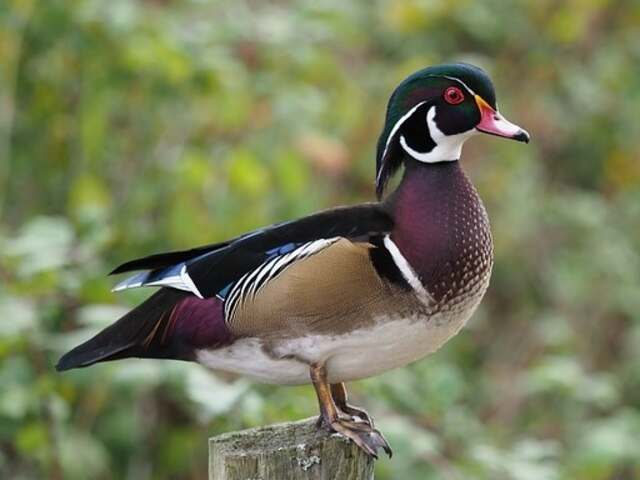Have you ever been chased by a flock of ducks at the park and wondered, “Do ducks bite?” The short answer is yes, they do! But fear not, my fellow fowl enthusiasts, for it’s not all doom and gloom!
In this article, we’ll explore the reasons behind a duck’s bite, how to avoid being bitten, and some interesting facts about these feathered creatures. So, let’s waddle forward and dive into the fascinating world of duck bites!
Table of Contents [show]
Understanding Duck Behavior
Get to know the behavior of these feathered friends to avoid any unexpected surprises. Ducks are social creatures that live in flocks and have a well-defined social hierarchy. This hierarchy is often established through aggressive displays such as biting, pecking, and wing-flapping.
Understanding duck communication is important to avoid being bitten or injured when interacting with them. Mating behavior is another aspect of duck behavior that can lead to aggressive behavior towards humans.
During the breeding season, male ducks can become territorial and aggressive towards potential rivals. This is especially true in species such as mallards, where males will often fight over a single female.
It is important to give ducks their space during breeding season to avoid any unwanted interactions.
In conclusion, understanding duck behavior is crucial when interacting with these animals to avoid any unexpected bites.
Knowing about their social hierarchy, communication, and mating behavior can help you stay safe and respectful towards these feathered friends.
Next, it’s important to understand the importance of respectful interaction when interacting with ducks.
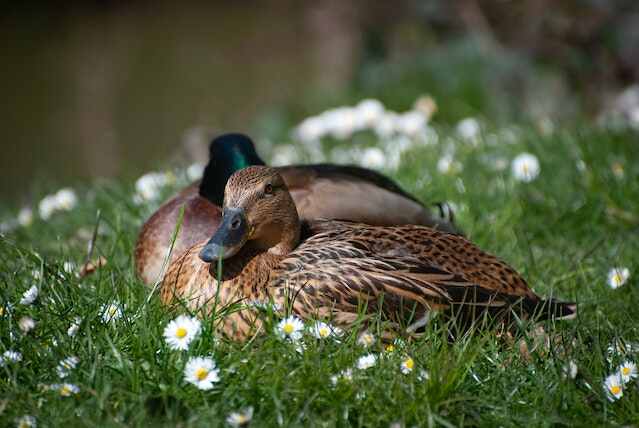
The Importance of Respectful Interaction
Respecting animals is crucial – after all, who wants to be treated disrespectfully? When it comes to ducks, it’s essential to understand boundaries, practice respectful communication, and develop empathy.
These birds are not aggressive by nature, but they can bite when they feel threatened or uncomfortable. Therefore, it’s crucial to approach them with respect and caution.
To ensure that your interaction with ducks is respectful, consider the following tips:
- Avoid sudden movements or loud noises that could startle the ducks
- Don’t chase or grab them, as this can cause stress and fear
- Offer food as a gesture of goodwill, but don’t overfeed them or give them harmful substances
- Respect their space and allow them to move away if they want to
- Observe their behavior and body language to understand how they’re feeling
By following these guidelines, you can create a positive and respectful interaction with ducks. Developing empathy towards animals is a critical part of this process.
By putting yourself in their shoes, you can understand how they might feel in certain situations and adjust your behavior accordingly.
In conclusion, treating ducks with respect and kindness is not only the right thing to do, but it can also make your interaction with them more enjoyable.
Understanding boundaries, practicing respectful communication, and developing empathy are all key components of this process.
In the next section, we’ll explore different types of ducks and their temperaments to enhance your understanding of these fascinating birds.
Types of Ducks and Their Temperaments
You may be interested to learn about the different types of ducks and their unique temperaments, which can vary greatly depending on the species and individual bird.
For example, Mallards are known for their breeding habits, as they mate for life and often return to the same nesting site year after year.
They are also migratory birds, traveling long distances each year between their breeding and wintering grounds. In terms of vocalization, male Mallards have a distinctive quack, while females have a quieter, raspy quack.
Another type of duck with a different temperament is the Muscovy duck. Unlike Mallards, Muscovy ducks are not migratory and do not mate for life.
Instead, they breed year-round and may have multiple partners. They are also known for being quiet birds, often making hissing or cooing sounds instead of quacks.
Muscovy ducks can be quite friendly towards humans and may even follow you around, hoping for food.
The temperament of ducks can vary greatly, even within the same species. Some ducks, like the Pekin, can be quite docile and friendly, while others, like the aggressive Merganser, may be more prone to biting.
Understanding the different temperaments of ducks can help you interact with them in a respectful and safe manner. In the next section, we’ll discuss how to recognize signs of aggression in ducks.
Signs of Aggression in Ducks
As you observe the behavior of these feathered creatures, you may notice subtle cues that indicate their aggression, such as flapping wings, hissing, or puffing up their feathers.
Aggressive behavior in ducks can be attributed to a number of factors, such as territoriality, mating competition, and nest protection.
When you approach a duck that is displaying these signs, it’s best to keep a safe distance and avoid provoking them.
Duck training can also play a role in reducing aggressive behavior. By handling ducks from a young age, they can become accustomed to human interaction, which can help prevent them from feeling threatened.
Additionally, providing ducks with enough space and resources can reduce competition between them, which can also lessen their aggressive tendencies.
Despite these efforts, there may still be factors that trigger biting in ducks. Factors such as hunger, fear, stress, and illness can cause ducks to become more aggressive.
Being aware of these potential triggers and providing ducks with the appropriate care can help prevent biting and other aggressive behaviors.
Overall, being observant and proactive in addressing aggression in ducks can help ensure a safe and enjoyable interaction with these fascinating animals.
Factors That May Trigger Biting
Identifying triggers for biting in ducks can help prevent aggressive behavior and ensure a positive interaction with these fascinating creatures.
One factor that may trigger biting is duck aggression. Some ducks are naturally aggressive and may bite if they feel threatened or cornered.
It’s important to be aware of the type of duck you are interacting with and to approach them with caution.
Another factor that may trigger biting is the behavior of humans. If a person is too rough with a duck or tries to pick them up without their consent, the duck may bite in self-defense.
It’s important to be gentle and respectful when handling ducks, and to let them come to you rather than forcing interaction.
Lastly, ducks may bite if they feel territorial or protective. If a duck has a nest or a mate nearby, they may perceive humans as a threat and act aggressively.
It’s important to give ducks their space and to avoid approaching them if they are displaying signs of aggression.
Understanding these factors that may trigger biting in ducks can help prevent negative interactions and ensure a positive experience for both humans and ducks.
However, even with this knowledge, accidents can still happen. That’s why it’s important to know how to handle ducks correctly, which we will discuss in the next section.
Handling Ducks Correctly
Are you ready to learn how to handle ducks correctly and ensure a safe and enjoyable interaction with these feathered creatures? Proper handling is key when it comes to avoiding any potential bites from ducks.
You need to approach them with a respectful interaction in mind. Avoid sudden movements or loud noises that may trigger their aggression. When handling ducks, make sure to keep your hands low and move slowly.
It’s important to remember that ducks are not pets and shouldn’t be treated as such. They are wild animals and need to be respected as such. When handling ducks, avoid picking them up or restraining them in any way.
This can cause them to become anxious and aggressive, potentially leading to bites or scratches. Instead, try to interact with them on their level by sitting or kneeling down and allowing them to approach you.
In addition, always be mindful of their body language. If a duck starts to hiss or flap its wings, it’s a clear sign that they are feeling uncomfortable or threatened.
In such cases, the best thing to do is to step back and give them space. Remember, a safe and enjoyable interaction with ducks is all about mutual respect and understanding.
With these tips, you can ensure that your time spent with these feathered creatures is a pleasant and memorable one.
Now that you know how to handle ducks correctly, it’s time to move on to the next step – learning about tips for feeding them!
Tips for Feeding Ducks
Get ready to feed those hungry ducks! When it comes to feeding ducks, it’s important to follow proper picnic etiquette.
Avoid feeding them near areas where people are swimming or fishing, as it can attract unwanted attention from other animals. Instead, find a quiet spot away from the water where the ducks can feed without disturbance.
Another important factor to consider is the type of food you offer the ducks. While they may enjoy bread, it’s not the healthiest option for them.
Instead, consider offering them some fruits or vegetables, such as grapes or peas. You can also purchase duck food pellets from most pet stores, which are formulated specifically for their dietary needs.
It’s important to note that hand-feeding ducks is not recommended. While they may seem friendly, ducks have powerful beaks and could accidentally bite you while trying to grab the food.
Instead, toss the food towards them in small pieces, allowing them to safely retrieve it without risking injury to either party.
With these tips in mind, you can ensure that your feathered friends are well-fed and happy.
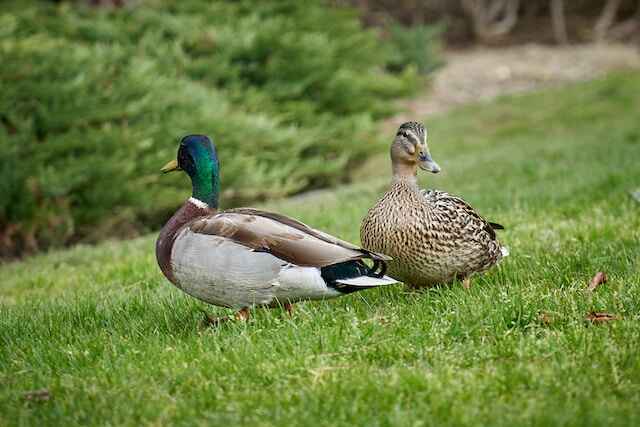
Avoiding Hand-Feeding
To keep yourself safe and avoid any accidental injuries, it’s best to refrain from hand-feeding the ducks, so toss the food towards them instead.
Ducks may become aggressive when they are hand-fed, and they may also bite you if they mistake your fingers for food.
To prevent this, it’s important to remember that ducks are wild animals and should be treated with respect.
If a duck approaches you, it’s important to pay attention to its body language. If the duck is wagging its tail or flapping its wings, it may be a sign that it is feeling agitated or threatened.
In this case, it’s best to back away slowly and avoid getting too close to the duck. If the duck is calm and relaxed, it may be safe to toss some food towards it.
Remember, while feeding ducks can be a fun and enjoyable activity, it’s important to do so safely. By avoiding hand-feeding and paying attention to their body language, you can help prevent any accidents or injuries.
Here’s a table that summarizes some key tips for avoiding hand-feeding, handling aggression, and enjoying your time with ducks:
| Tips for Feeding Ducks | Duck Care Tips | Handling Aggression |
|---|---|---|
| – Avoid hand-feeding | – Maintain a respectful distance | – Back away slowly |
| – Bring duck food to toss on the ground | – Be aware of territorial behavior | – Avoid direct eye contact |
| – Observe ducks swimming and interacting | – Respect the ducks’ space | – Don’t provoke or harass ducks |
By following these tips, you can safely interact with ducks without putting yourself or the ducks at risk. Next, let’s explore how to recognize a duck’s body language to better understand their behavior and communication.
In the next section, we’ll discuss how to recognize a duck’s body language in more detail.
How to Recognize a Duck’s Body Language
Knowing how a duck communicates through its body language can help you safely interact with them while feeding.
Reading body language is essential when it comes to feeding ducks because it helps you understand their mood, behavior, and whether they are comfortable around you.
Here are some tips on how to recognize a duck’s body language:
- Pay attention to their eyes: Ducks have large, expressive eyes that can give you an idea of their emotions. If their eyes are relaxed and calm, they’re comfortable around you. If their eyes are wide open and alert, they may feel threatened or scared.
- Watch their head movements: A duck’s head movement can tell you a lot about their behavior. If they are nodding their head, they’re showing you that they are content and comfortable. If they are bobbing their head up and down, they’re trying to get your attention or asking for food.
- Observe their body posture: A duck’s body posture can tell you whether they feel safe or threatened. If they are standing upright with their head held high, they’re comfortable and trust you. If they are hunching down and tucking their head, they may feel threatened.
By approaching cautiously and building trust with ducks, you can learn to understand their body language and communicate with them effectively. Remember to never make sudden movements and always offer food slowly and gently.
Understanding a duck’s body language can help you have a safe and enjoyable experience while feeding them.
It’s important to know when a duck feels threatened. Identifying when a duck feels threatened can help you avoid any potential harm to yourself or the duck.
Identifying When a Duck Feels Threatened
It’s crucial to be aware of when a duck feels threatened, as their body language will give you hints about their emotions, and can help you avoid any unpleasant situations.
Identifying triggers that make a duck feel threatened is the first step in preventing any potential aggression.
Non-aggressive behavior, such as avoiding eye contact, staying calm, and speaking softly, can help to de-escalate the situation.
If a duck feels threatened, they may exhibit several signs of aggression, such as hissing, flapping their wings, or even biting.
If you notice any of these signs, it’s essential to give the duck their space and avoid any sudden movements.
You can also try calming techniques, such as slowly backing away or offering them food, to help calm them down.
Remember, prevention is key when dealing with ducks. However, if you do find yourself in a situation where you’re bitten by a duck, it’s important to know what steps to take next.
What to Do If You’re Bitten by a Duck
If a duck bites you, don’t panic, there are steps you can take to prevent infection and promote healing.
Firstly, you should thoroughly clean the wound with soap and water. This helps to remove any bacteria that may have entered the wound and reduces the risk of infection.
If the wound is deep or bleeding heavily, apply pressure to the wound with a clean cloth or bandage.
Secondly, it’s important to monitor the wound for signs of infection. These signs may include redness, swelling, pain, or pus.
If you notice any of these symptoms, seek medical attention immediately. A doctor may prescribe antibiotics or recommend other treatments to prevent the infection from worsening.
It’s important to always take any prescribed medication until it’s finished, even if the wound appears to be healing well.
Lastly, remember to keep the wound covered with a sterile dressing to promote healing and prevent further infection.
Change the dressing regularly, especially if it becomes wet or dirty. It’s important to avoid irritating the wound further by scratching or touching it too much.
By following these steps, you can ensure that the wound heals quickly and without complications.
In the next section, we’ll discuss further methods of treating duck bites.
Treating Duck Bites
Treating a duck bite can be a painful and stressful experience, but there are effective steps you can take to promote healing and prevent infection.
The first step is to clean the wound with soap and warm water. This will help remove any dirt or bacteria that may have entered the wound.
After cleaning the wound, apply pressure to stop any bleeding. If the wound is deep or bleeding heavily, seek medical attention immediately.
Once the bleeding has stopped, you can apply a sterile bandage or dressing to the wound to protect it from further infection.
Change the dressing daily and monitor the wound for any signs of infection, such as redness, swelling, or pus. You can also take over-the-counter pain medication to help manage any discomfort or pain.
In addition to first aid and wound care, it’s important to take steps to prevent infections from duck bites.
This includes avoiding contact with wild ducks and other birds, as well as practicing good hygiene, such as washing your hands regularly and keeping your wound clean and dry.
By taking these steps, you can promote healing and reduce the risk of infection from a duck bite.
Preventing Infections from Duck Bites
Duck bites can be painful and may cause infections if not treated properly. In the previous subtopic, we discussed how to treat duck bites.
However, prevention is always better than cure. In this subtopic, we’ll discuss duck bite prevention, wound care, and infection control.
The first step in preventing duck bites is to avoid feeding them. Ducks may become aggressive if they’re used to being fed by humans. It’s also important to avoid approaching them too closely or cornering them.
If you do get bitten, it’s important to clean the wound immediately and apply an antiseptic cream. This will prevent bacteria from entering the wound and causing an infection.
If the wound is bleeding heavily, apply pressure with a clean cloth until the bleeding stops. If the wound is deep or you’re unsure how to treat it, seek medical attention as soon as possible.
Proper hygiene is essential in preventing infections from duck bites. Wash your hands thoroughly with soap and water after handling ducks or any other animals.
Avoid touching your face or mouth until you’ve cleaned your hands. It’s also important to keep the wound clean and dry to prevent bacteria from entering the wound.
By following these simple steps, you can avoid the risk of infection and enjoy watching ducks without worrying about getting bitten.
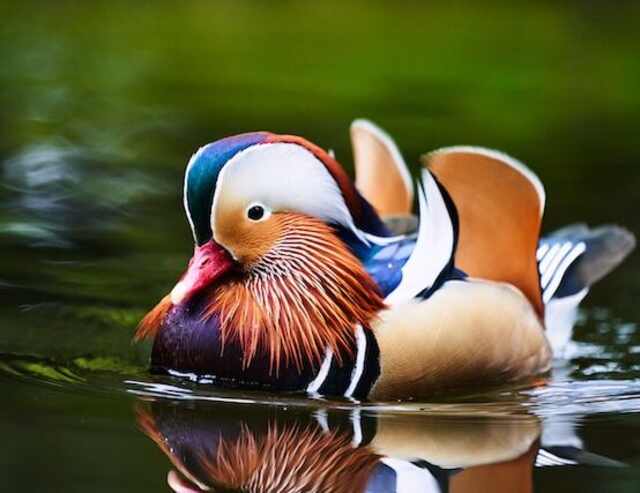
The Importance of Proper Hygiene
Maintaining appropriate cleanliness practices is crucial in preventing infections caused by interactions with waterfowl.
Proper hygiene can help you avoid exposure to duck related diseases that can be transmitted through bites, scratches, or even indirect contact with contaminated water.
To ensure your safety and that of your children, consider adopting the following cleaning techniques:
- Wash your hands regularly with soap and water, especially after handling ducks or coming into contact with their feces.
- Avoid touching your face, mouth, or eyes while interacting with ducks.
- Disinfect any cuts or scratches immediately and cover them with a bandage.
- Wear protective clothing, such as gloves or long sleeves, when handling ducks.
By adopting these practices, you can reduce the risk of developing infections such as Salmonella, E. coli, or Campylobacter. Proper hygiene is not only crucial for your health but also for the well-being of these animals.
Remember to clean up any food scraps or waste after feeding ducks, and dispose of them properly to prevent the spread of disease.
As you enjoy spending time with ducks, it’s important to remember that they are wild animals and can be unpredictable.
In the next section, we will discuss how to talk to children about duck safety and the importance of respecting these creatures’ boundaries.
Talking to Children about Duck Safety
To keep your kids safe around waterfowl, it’s important to have a conversation with them about duck safety and how to respect these animals’ boundaries.
You can start by teaching them about duckling safety and how to behave around young ducks.
Explain to them that ducks are protective of their young and can become aggressive if they feel threatened. Teach them to keep a safe distance and avoid touching or feeding the ducklings.
Another important aspect of pond etiquette is to avoid feeding ducks bread. Explain to your children that bread lacks the necessary nutrients for a duck’s diet and can cause them to become dependent on humans for food.
Instead, encourage them to feed ducks with a variety of healthy foods such as grains, seeds, and vegetables.
By educating your children on duck safety and pond etiquette, you are not only keeping them safe but also helping to protect these beautiful creatures.
It’s important to remember that ducks are wild animals and should be treated with respect. Encourage your children to observe ducks from a distance and appreciate their natural behavior.
It’s also important to share this knowledge with others to promote responsible behavior around wildlife.
Educating Others on Duck Behavior
Learning about how these beautiful creatures behave in the wild can help you better appreciate and protect them while enjoying their presence.
Whether you’re an avid birdwatcher, a nature enthusiast, or someone who just enjoys a walk in the park, understanding duck behavior can help you have a safe and enjoyable interaction with these animals.
Here are four things you should know about duck behavior:
- Ducks are social creatures that live in flocks. They communicate with each other through a variety of vocalizations and body language.
- Both male and female ducks can be aggressive during breeding season. They may bite or attack humans who get too close to their nests or young offspring.
- Ducks are omnivores and eat a variety of foods, including insects, plants, and small fish. They may approach humans looking for food, but feeding them can be harmful to their health and disrupt their natural diet.
- Ducks are capable of flying long distances and are skilled swimmers. They may dive underwater for several seconds to search for food or avoid predators.
By understanding these behaviors, you can avoid potentially dangerous situations and promote a healthy environment for ducks and other wildlife.
However, there are still some common misconceptions about ducks that need to be addressed. In the next section, we’ll explore some of these misconceptions and provide accurate information about duck behavior.
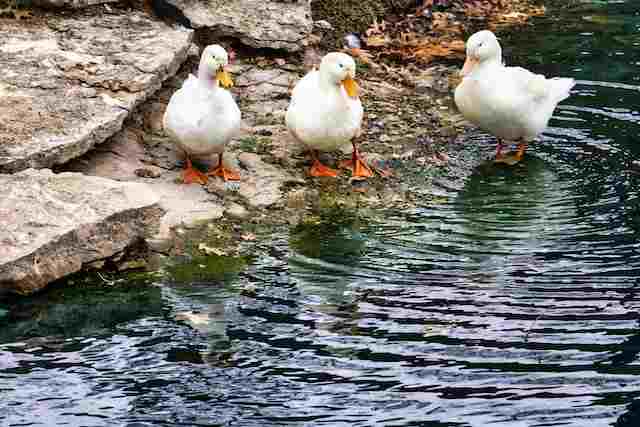
Common Misconceptions about Ducks
Don’t be fooled by common misconceptions! There’s more to duck behavior than meets the eye. Misunderstood ducks are often viewed as messy, aggressive, and loud animals.
However, these duck myths are debunked by understanding the intricacies of their behavior.
Ducks are known to be messy animals, but what many people don’t realize is that their tendency to create a mess is a natural behavior. Ducks are waterfowl, and the water is their home.
They need to dunk their heads in the water and flap their wings to keep themselves clean and healthy. To do this, they stir up the water and mud, creating a mess in the process.
Another common misconception about ducks is that they are aggressive and will bite people. While it’s true that ducks have a strong beak, they rarely use it to bite humans.
Ducks are generally shy creatures and will only attack if they feel threatened or provoked. If you give them their space and respect their boundaries, you can observe their fascinating behavior up close without fear of being bitten.
Ducks play a significant role in ecosystems by helping to maintain the balance of nature. They act as scavengers, eating insects and small animals that might otherwise overpopulate and destroy the environment.
They also help to keep aquatic plants in check, preventing them from taking over the water.
By understanding the true behavior of ducks, we can appreciate their contributions to the environment and enjoy observing them in their natural habitats.
The Role of Ducks in Ecosystems
Ducks play a vital role in maintaining the balance of nature by scavenging and helping to control the growth of aquatic plants.
Duck migration, nesting habits, predator-prey relationships, and other factors all contribute to the important role they play in ecosystems.
When ducks migrate, they help to distribute seeds and other nutrients across large areas, which helps to promote the growth of different plants and animal species.
Ducks also help to fertilize the soil by depositing their waste in areas where it can be used to nourish other plants and animals.
In addition to their role in maintaining the balance of nature, ducks also help to control the growth of aquatic plants.
They do this by eating the plants, which helps to prevent them from overgrowing and crowding out other species.
Ducks also help to control populations of other animals, such as insects and small fish, which can cause problems if they are allowed to grow unchecked.
Despite their importance in maintaining the balance of nature, ducks face many environmental threats that can impact their populations.
These threats include habitat loss, pollution, and climate change.
As we continue to learn more about the importance of ducks in ecosystems, it’s important that we take steps to protect them and ensure that they continue to thrive in the wild.
Environmental Threats to Duck Populations
Environmental threats to duck populations are a significant concern for ecologists and conservationists. Pollution impact, hunting regulations, and habitat destruction are all factors that contribute to the decline of duck populations in different parts of the world.
Pollution from agricultural runoff and other human activities can contaminate the water sources where ducks live and breed. This can lead to the spread of diseases and the death of the birds.
In addition to pollution, hunting regulations can also impact duck populations. While hunting is a popular activity for many people, it can lead to overhunting and the depletion of duck populations.
This is why it’s essential to have strict hunting regulations that limit the number of ducks that can be hunted each season. Failure to do so can lead to long-term declines in duck populations and threaten the overall health of an ecosystem.
Lastly, habitat destruction is another major threat to duck populations. Wetlands, marshes, and other natural habitats are critical for ducks to survive and thrive.
Unfortunately, these habitats are often destroyed for human development, such as the construction of homes and businesses.
It’s crucial to protect these habitats and ensure that they remain intact for future generations of ducks and other wildlife.
Climate change and its impact on duck migration patterns, the role of predators in duck populations, and the importance of international cooperation in protecting duck populations are all significant factors to consider.
These challenges can be addressed through conservation efforts that focus on protecting habitats, enacting hunting regulations, and reducing pollution.
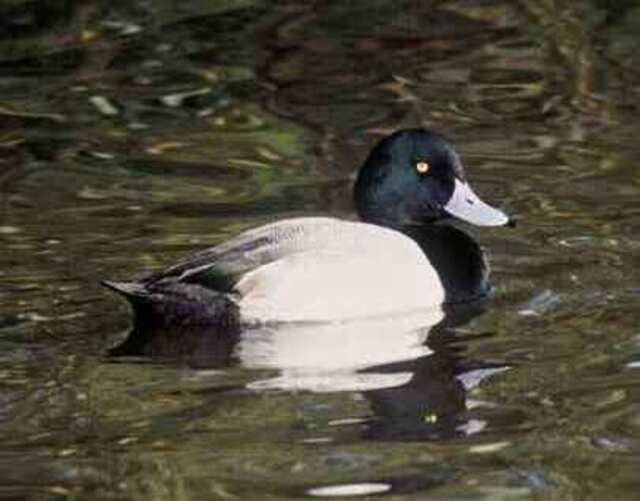
Conservation Efforts for Ducks
You’ll be surprised by the innovative conservation efforts being implemented to protect these beloved birds.
Collaborative research, habitat restoration, and community awareness programs are just some of the ways conservationists are working to ensure the survival of duck populations.
Through partnerships with universities, government agencies, and private organizations, researchers are gathering data on duck behavior, migration patterns, and breeding habits.
Habitat restoration is another crucial aspect of conservation efforts. Ducks require wetlands, lakes, and ponds with adequate vegetation to thrive.
Unfortunately, many of these habitats have been destroyed or degraded by human activities such as agriculture and urban development.
Conservationists are working to restore these habitats through reforestation, wetland restoration, and other efforts. These actions not only benefit ducks but also other species that depend on these habitats for survival.
Community awareness is also critical to the success of duck conservation efforts. By educating the public about the importance of ducks and their habitats, conservationists hope to inspire people to take action to protect these beloved birds.
This can include simple actions like reducing water pollution and littering, as well as more complex efforts like advocating for wetland preservation and restoration.
By working together, we can ensure that future generations will be able to enjoy the beauty and wonder of ducks in the wild.
Duck watching is not only a fun and relaxing hobby, but it also has many benefits for both humans and ducks.
By observing these birds in their natural habitats, we can learn more about their behavior and biology and gain a greater appreciation for the beauty and diversity of the natural world.
Additionally, by supporting conservation efforts and promoting habitat restoration, we can help ensure that ducks will continue to thrive for generations to come.
So, grab your binoculars and head out to your local wetland or park to enjoy the wonders of duck watching!
The Benefits of Duck Watching
Watching ducks can be a relaxing and educational experience, as you’ll gain a greater appreciation for nature and its diversity. Observing ducks in their natural habitat can provide a sense of mindfulness and relaxation, as you take in their calm and serene presence.
You can also learn about different species of ducks and their behaviors, such as their feeding habits and social interactions. Duck watching can be an activity that anyone can enjoy, regardless of age or physical ability.
You can visit a local pond or lake, or even watch ducks in a nearby park. All you need is a comfortable spot to sit and observe, and perhaps some binoculars to get a closer look.
You can also bring along a field guide to ducks, which can help you identify different species and learn more about their unique characteristics.
If you’re interested in capturing photos of ducks safely, it’s important to remember to respect their space and not disturb them.
You can use a telephoto lens to take close-up shots from a distance, or try to blend in with your surroundings to avoid scaring them away.
By taking the time to appreciate these beautiful and fascinating creatures, you’ll gain a deeper understanding of the natural world and the importance of conservation efforts.
Capturing Photos of Ducks Safely
To get the perfect shot of these magnificent creatures, it’s important to know how to capture photos of them safely without disturbing them.
First, ensure a safe approach by keeping a distance of at least 10 feet away from the ducks. This will prevent them from feeling threatened and will also help to avoid any potential accidents.
It’s important to respect their natural habitat and avoid getting too close to their nests or mating pairs.
Second, having the right camera equipment can make all the difference. A telephoto lens will allow you to capture close-up shots without having to get too close to the ducks.
A tripod will provide stability, ensuring that your shots are not blurry. It’s also a good idea to bring extra batteries and memory cards to avoid running out of storage or power during your shoot.
Lastly, be patient and observe the ducks’ behavior. Take the time to study their movements and interactions.
This will allow you to anticipate their actions and capture candid shots that showcase their natural beauty. Remember, the goal is to capture their essence without disrupting their daily routine.
Now that you know how to safely capture photos of ducks, it’s time to take your interest in bird watching to the next level. Joining bird-watching groups can provide you with a wealth of knowledge and opportunities to observe not only ducks but other bird species as well.
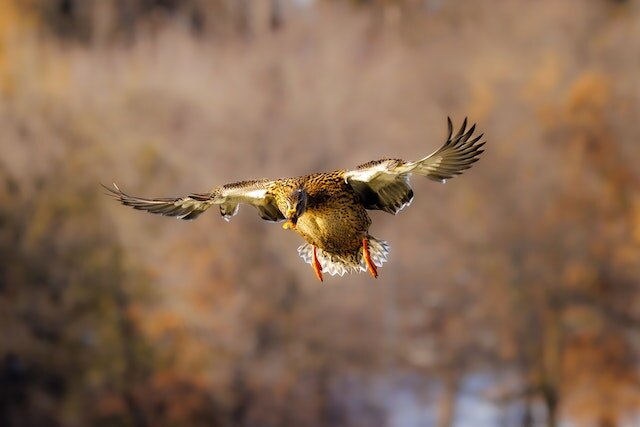
Joining Bird-Watching Groups
Joining bird-watching groups can be a wonderful opportunity to expand your knowledge and appreciation for various avian species.
Finding groups in your local community is easy through online searches or connecting with local nature centers.
These groups often meet regularly to share experiences and learn techniques for observing and identifying different birds.
In addition to gaining knowledge and experience, joining bird-watching groups provides a sense of community and shared excitement for nature.
You’ll meet like-minded individuals who share your passion for birds and the environment. It’s a great way to connect with others and form lasting friendships while enjoying the great outdoors.
One bird species that you may encounter on your bird-watching adventures is the duck. While ducks are generally not aggressive, it’s important to remember that they are wild animals and may bite if they feel threatened.
That’s why it’s important to learn how to safely observe and interact with ducks, which we’ll cover in the next section on exploring duck sanctuaries.
Exploring Duck Sanctuaries
If you’re looking to observe unique and beautiful waterfowl in their natural habitat, exploring duck sanctuaries can provide you with a safe and enjoyable experience.
Visiting sanctuaries can help you appreciate nature more and advocate conservation efforts that protect ducks and their habitats.
You’ll get to see various species of ducks and other waterfowl up close and learn about their behaviors and characteristics.
When you explore duck sanctuaries, you’ll be amazed by the tranquility and beauty of these natural habitats. You’ll see ducks swimming and gliding on the water, feeding, and interacting with each other and their environment.
You can also witness ducks nesting and raising their young, which is a magical and heartwarming experience.
These sanctuaries are a peaceful and serene refuge for ducks, and you’ll feel grateful for being able to observe them in their natural habitat.
Exploring duck sanctuaries can be a therapeutic and educational experience. You’ll learn about the importance of wetlands and how they provide critical habitats for ducks and other wildlife.
You’ll also learn about the threats that ducks face from habitat loss, pollution, and hunting.
By visiting sanctuaries and supporting conservation efforts, you can help protect these beautiful creatures and ensure that future generations can enjoy them too.
Enjoying the beauty of ducks in nature is a rewarding and inspiring experience that you’ll cherish for a lifetime.
Enjoying the Beauty of Ducks in Nature
There’s nothing quite like experiencing the serene beauty of ducks in their natural habitat, a moment that will leave you feeling awestruck and grateful for the wonders of the natural world.
Ducks gracefully swim through the water, their vibrant colors shining in the sunlight. As you watch them, you can’t help but appreciate the beauty of these creatures.
Taking a peaceful walk around a nearby pond or lake can be a great way to enjoy the beauty of ducks in nature.
Not only can watching ducks be a peaceful activity, but it can also provide great photography opportunities. With their colorful feathers and unique behaviors, ducks make for great subjects to capture with a camera.
Whether you’re a professional photographer or an amateur just looking to snap some pictures, being in nature and photographing ducks can be a rewarding experience.
Just make sure to keep a respectful distance from the ducks to avoid disturbing them.
Overall, enjoying the beauty of ducks in nature is a wonderful way to connect with the natural world. It can be a peaceful and meditative activity, as well as a chance to appreciate the vibrant colors and unique behaviors of these creatures.
So next time you’re near a pond or lake, take a moment to stop and watch the ducks, and you may find yourself feeling more connected to nature.
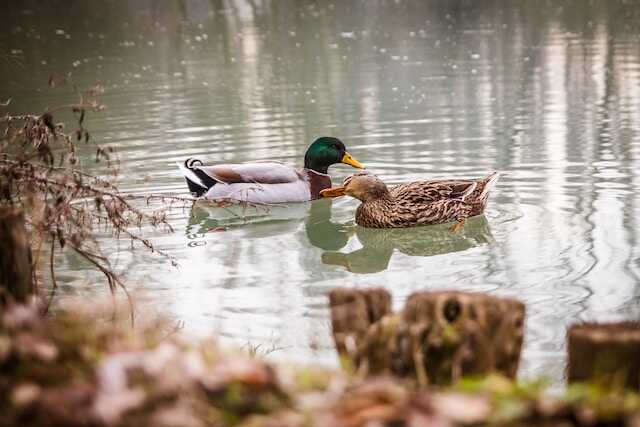
Frequently Asked Questions
What is the history of domesticated ducks?
Did you know that duck breeding dates back to ancient times? It’s true!
People have been breeding ducks for their meat, eggs, and feathers for thousands of years. Today, there are over 100 different breeds of domesticated ducks, each with their own unique characteristics and behaviors.
Some breeds, like Pekin ducks, are known for their docile and friendly personalities, while others, like Muscovy ducks, can be more aggressive.
Understanding domestic duck behavior is important for maintaining a safe and happy environment for both the ducks and their caretakers.
How do ducks mate and reproduce?
When it comes to mating behaviors, ducks have a unique approach. Male ducks will often display their colorful feathers to attract a mate, and females will choose the male with the most attractive plumage.
Once they mate, the female will lay her eggs in a hidden, secure location and begin the process of incubation. After about a month, the eggs will hatch, and the offspring development begins.
The mother duck will lead her ducklings to water and teach them how to swim and forage for food. Overall, the mating and reproductive behaviors of ducks are fascinating to observe and play an important role in the survival of their species.
What are some common illnesses that ducks can carry?
Ducks can carry several illnesses that can be harmful to humans and other animals. Some common illnesses carried by ducks include avian influenza, botulism, and duck plague.
Avian influenza is a viral infection that can cause respiratory problems and even death in humans.
Botulism is a bacterial infection that affects the nervous system and can cause paralysis.
Duck plague is a viral infection that affects ducks and other waterfowl. It causes respiratory problems, diarrhea, and even death.
It’s important to take necessary precautions when handling ducks or their waste to avoid contracting any of these illnesses.
How do ducks play a role in the food chain?
Picture a peaceful pond, where ducks paddle and dive for food, unaware of the intricate role they play in the ecosystem.
Ducks are not only a source of food for predators like foxes and raccoons, but they also contribute to the health of the ecosystem by controlling the population of insects and plants.
In addition, their migration patterns help to disperse seeds and nutrients across vast distances, contributing to the diversity of plant life.
So next time you spot a duck, remember that it’s not just a cute bird, but a vital player in the food chain.
What is the lifespan of a duck?
If you’re curious about the lifespan of a duck, you’ll be happy to know that it can vary depending on the species. For example, mallards typically live up to 10 years, while muscovy ducks can live up to 20 years.
But did you know that ducks also have interesting migration, feeding habits, and habitat preferences? Some ducks migrate thousands of miles each year, while others stay put in their preferred habitats.
When it comes to feeding, ducks are omnivorous and will eat a variety of foods including insects, plants, and even small fish. Their preferred habitats include wetlands, ponds, and marshes where they can find shelter, food, and water.
Conclusion
In conclusion, you now have a better understanding of duck behavior and the importance of respectful interaction.
Remember, ducks are living creatures and should be treated with care and consideration.
Different types of ducks have varying temperaments, so it’s important to observe their behavior and body language to prevent any potential aggression.
Factors such as food, nesting, and territorial instincts may trigger biting, so it’s best to keep a safe distance and avoid any confrontational behavior.
As you continue to explore the beauty of ducks in nature, always prioritize their safety and well-being.
Joining bird-watching groups and exploring duck sanctuaries can provide a wonderful opportunity to observe these magnificent creatures up close.
So go ahead and capture some stunning photos, but always do so in a way that doesn’t disturb or harm the ducks.
Remember, as the famous saying goes, “take nothing but pictures, leave nothing but footprints.”

